Chris Parkin provides a concise guide to choosing the right scope rings for your rifle build
So once your bases or proprietary mounting component is chosen, you need to look for suitable rings. Starting with 9 or 11mm dovetails on an air rifle or rimfire (pic. 1), the world is your oyster as there are many inexpensive options for all tube sizes in steel and aluminium alloys – but beware of cheap components. Cheap alloys are often soft, threads easily strip, and low-quality fasteners are quick to rust when exposed to damp and get stuck in the threaded sockets.
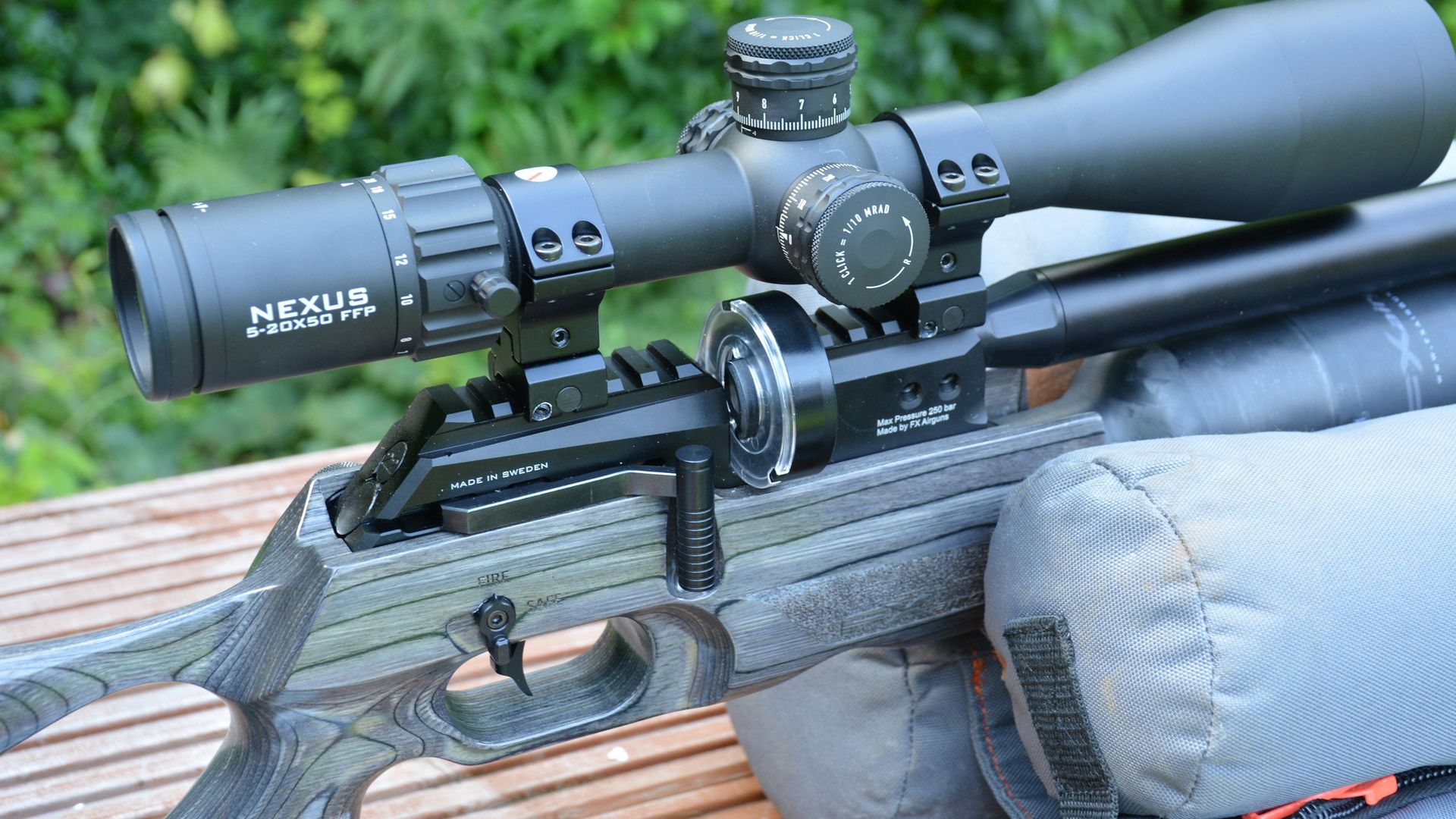 credit: Chris Parkin
credit: Chris Parkin
As well as tube size, consider mounting height, not just to clear the barrel but also any possible interference from magazines (pic. 2), loading ports or the bolt handle. Sometimes, undesirable as it is, you simply must add some height to create clearance. Don’t get too involved in mounts described as ‘low/medium/high’ as they have little bearing on actual dimensions and merely steps within a specific product range.
I’d generally avoid threadlock in the ring’s upper and lower or lateral screws, yet consideration should be paid to friction on the threads when tensioning. Tight threads and poor machining standards have the light 2Nm clicking off on my torque wrench (pic. 3) purely from friction in the fastener – nothing to do with applied pressures holding the scope in position.
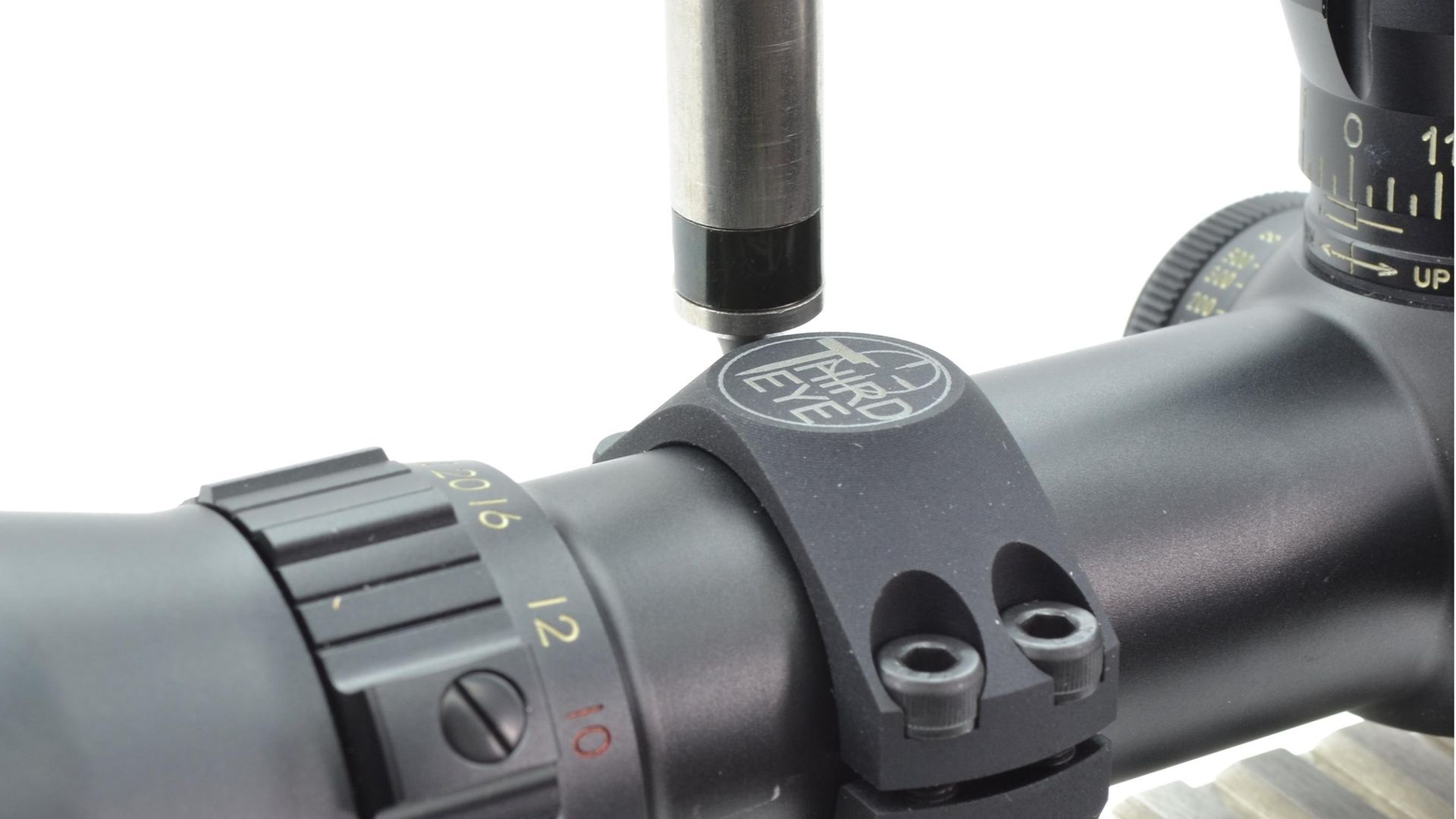 credit: Chris Parkin
credit: Chris Parkin
Steel and aluminium are no problem but be aware of long-term galling from the dissimilar metals. Interestingly the Titanium screws used in Tier One mounts have incredibly free-running threads, which I appreciate when mounting scopes, These little differences are noticeable and you end up with a faster scope mounting scenario with less likelihood of incorrectly tensioning a screw that appears to have reached the advised torque, yet hasn’t applied enough clamping force to the tube. Similarly, don’t over tension by confusing poor threads with insufficient pressure.
Quality counts
Manufacturing standards are crucial and rough edges not deburred, or misalignment from a ring of either material will easily dent a comparatively soft aluminium tube. Don’t get too excited over what is described as ‘aircraft grade’ aluminium as it’s an almost meaningless marketing tool. Instead look for the specification of the actual alloy used, (6061 or 7075), heat-treatment such as T6, or specific material properties such as hardness.
Rings are commonly available for Picatinny, and can work well with inclined rails (that effectively slope down towards the barrel) to add elevation. Some rings (like the Burris XTRs (pic. 4) have different sized inserts added to customise elevation. Think back to simple geometry; the actual spacing between rings can also alter the angular value, often expressed in minutes of angle, which is simply another unit similar to degrees or milliradians for angular measurement.
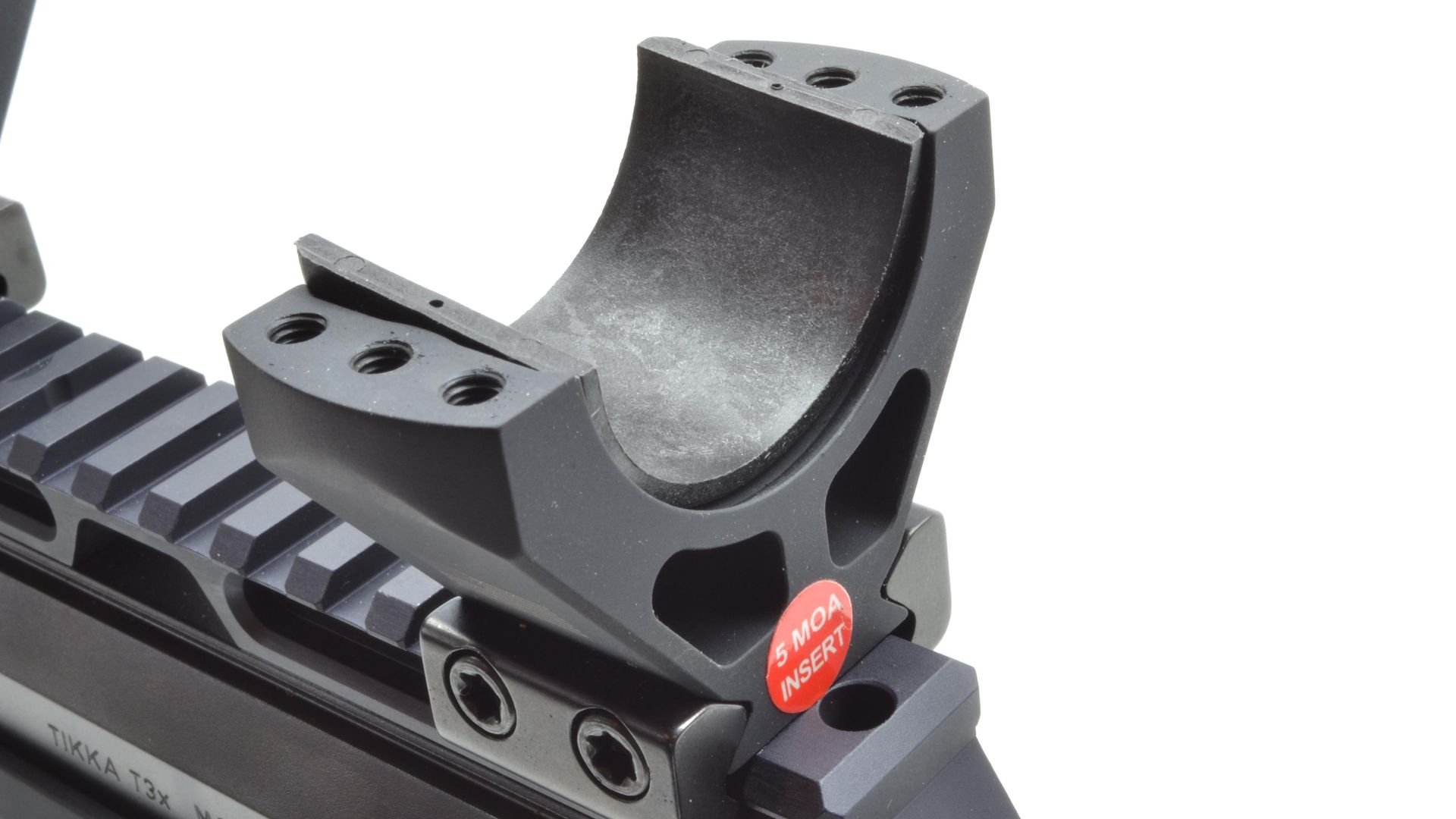 credit: Chris Parkin
credit: Chris Parkin
These polymer inserts are also superb for customising windage, and because they form a spherical profile, like a rose joint, they self-align and will not crimp a tube, as can happen when adding simple shims that don’t align with the cylindrical surfaces of rings and tube. Simpler non-spherical spacers are available for some rings but they simply reduce the ring size concentrically. They work well but be careful of adhesive taped inserts, which can create pressure points.
Clearance between scope and barrel is often considered to need just an air gap. However, over the years I have had a few scopes set up like that and when removed have shown marks on the underside of the objective body, confirming contact at some point. Don’t forget the barrel vibration as the bullet travels through it and the action/receiver itself during the rifle’s recoil cycle, all under tens of thousands of pounds per square inch pressure as the primer initiates the main charge.
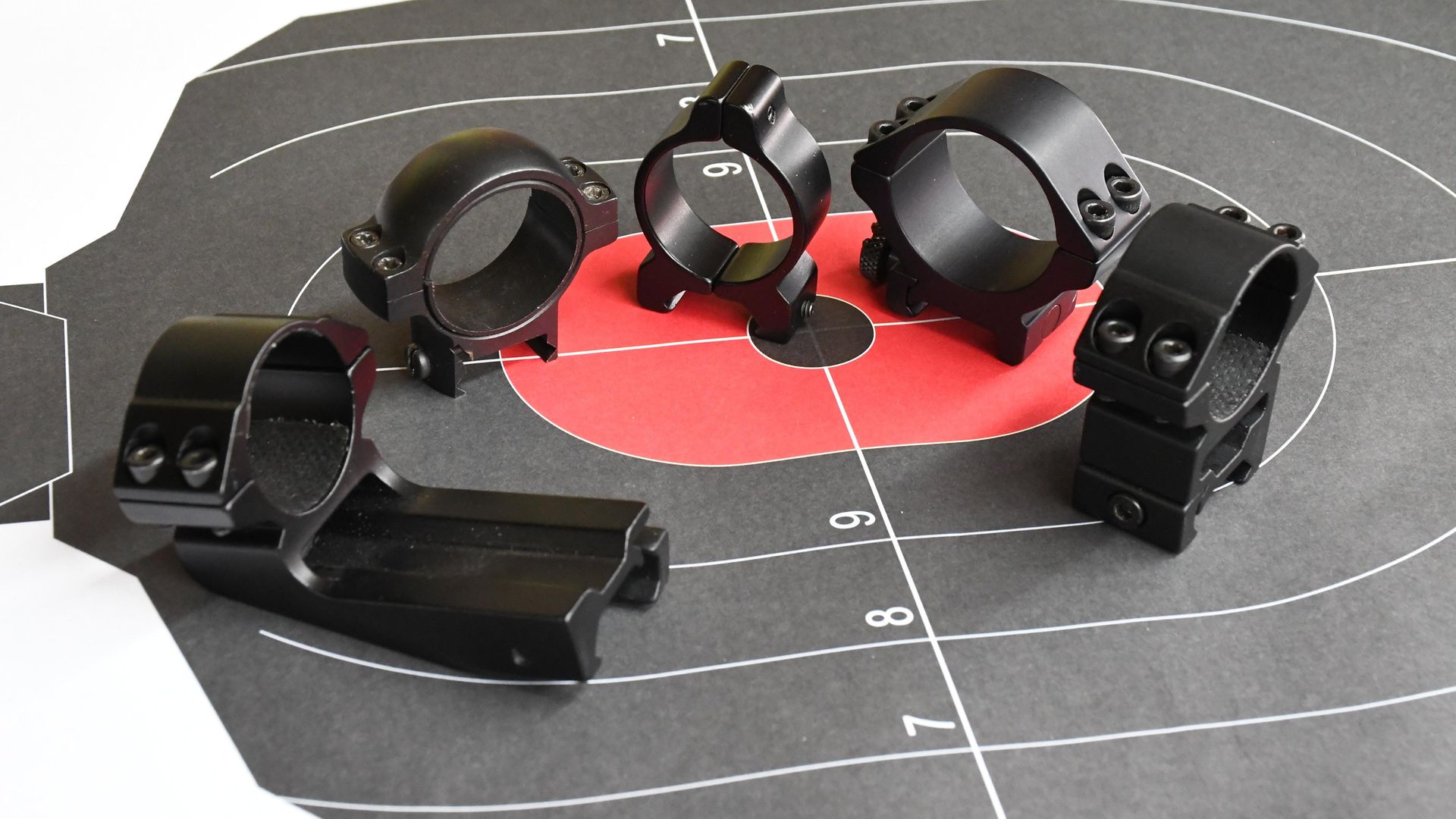 credit: Chris Parkin
credit: Chris Parkin
Essential eye relief
From an ergonomic perspective, eye relief must also be addressed. Some actions have restricted ring positioning on their bases or the rail itself, and in that case reach-forward or reach-back rings (pic. 5) are available. They are especially useful for larger scopes on shorter rimfire or air rifle actions.
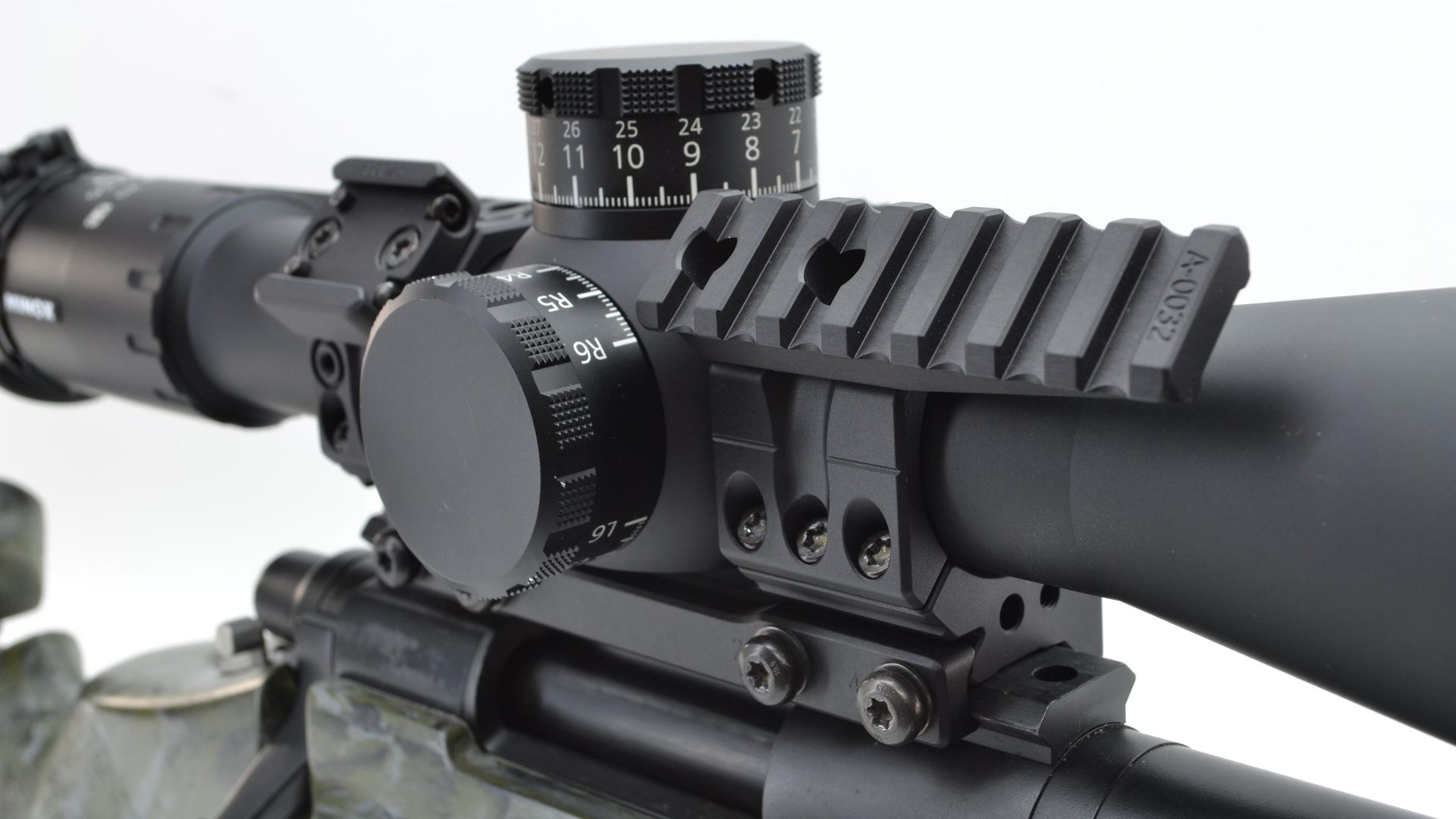 credit: Chris Parkin
credit: Chris Parkin
Many scopes love to advertise magnum eye relief, but it can be detrimental if the scope can’t physically be pushed far enough forward to attain the necessary eye relief without vignettes. This also introduces the possibility of using one-piece mounts for dovetails or picatinny rails (pic.6). Theoretically such mounts guarantee scope alignment within the rings, with everything constructed from one piece of aluminium, but beware the size and length of the scope’s central saddle. Make sure it will clear the centre of the single-piece mount and also that you aren’t too restricted in terms of eye relief and that brass ejection still functions correctly.
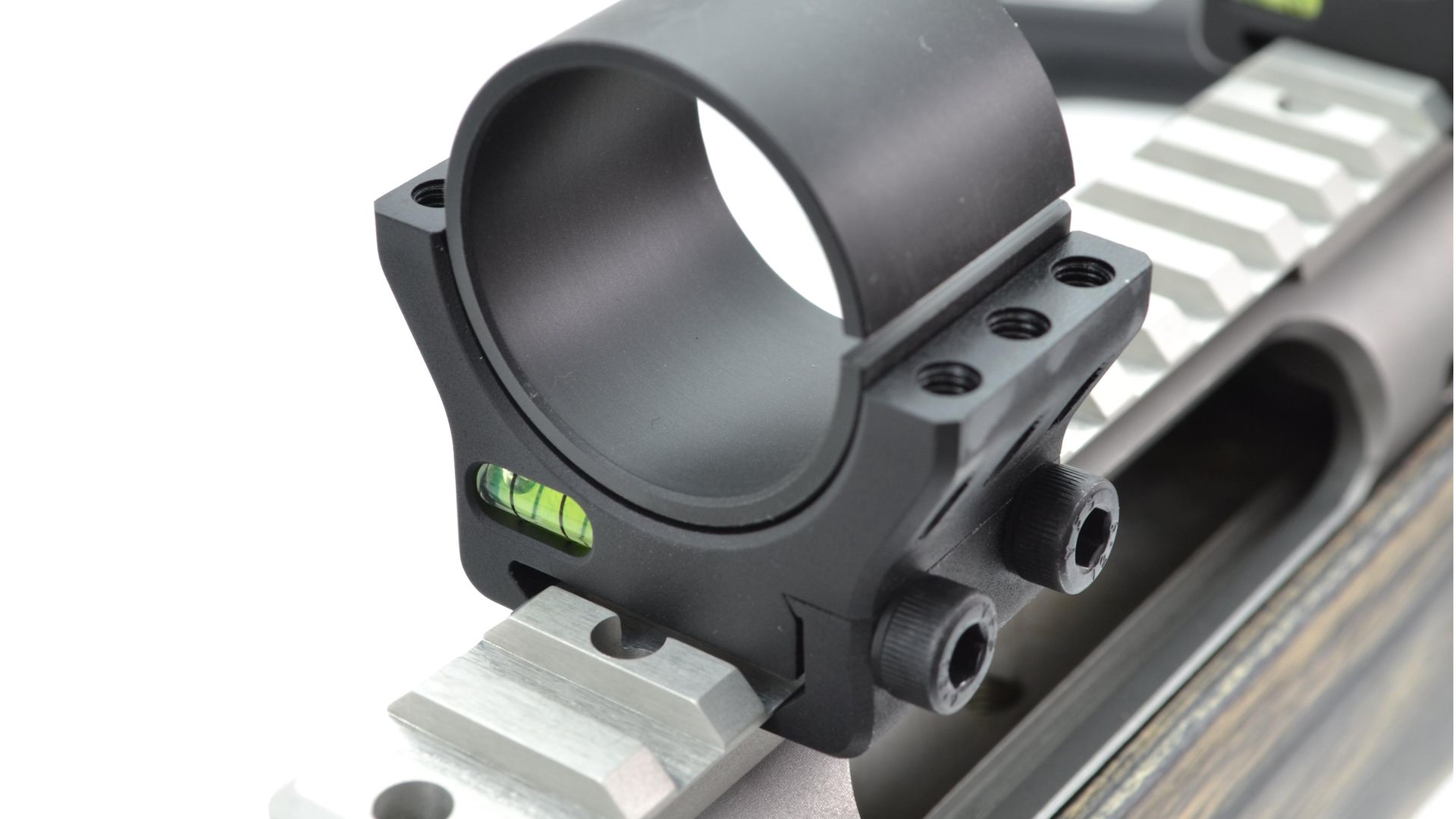 credit: Chris Parkin
credit: Chris Parkin
Some mounts offer add on options for red dot sights, night vision or thermal and/or small bubble levels to avoid cant (pic. 7). Single, twin or triple screw rings are available for compression of the tube itself. Twin are the most common, but singles aren’t necessarily a problem on lower recoiling guns. The triples are great for spreading even tensioning with a torque wrench (which I would always suggest using wherever possible) but they do require more tube space, which is not always available.
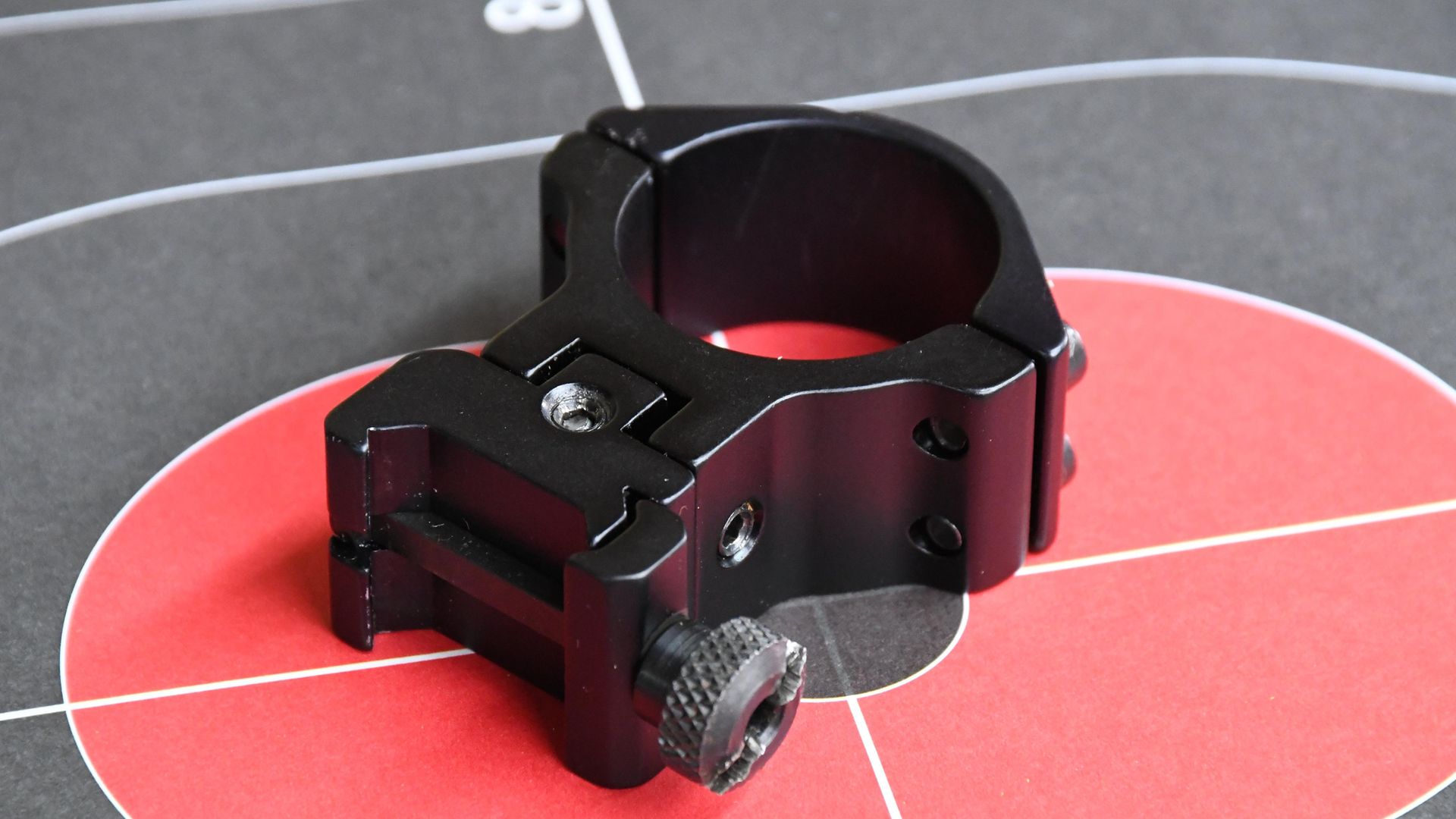 credit: Chris Parkin
credit: Chris Parkin
Finally, if you are likely to need to remove your scope repetitively for any reason, look for quick release, or at least rings with an independent claw clamping the base. Vertically split rings can be great, light and compact when set up and left alone, but not ideal for removal and refitting regularly as they tend to release all tension. Simple thumbwheels or screwdriver tensioned rings tend to be less easily tensioned and durable (pic 8) than those using Allen or Torx nuts. The latter are commonly seen in steel military items with ½" or 9/16" hex nuts to clamp rings to bases.
Cheap mechanical components can be one of the first things to fail in a shooting system, so don’t skimp on rings when building your rifle. Some rifles are more limited than others (pic. 9) but you can get most working with the correct research.
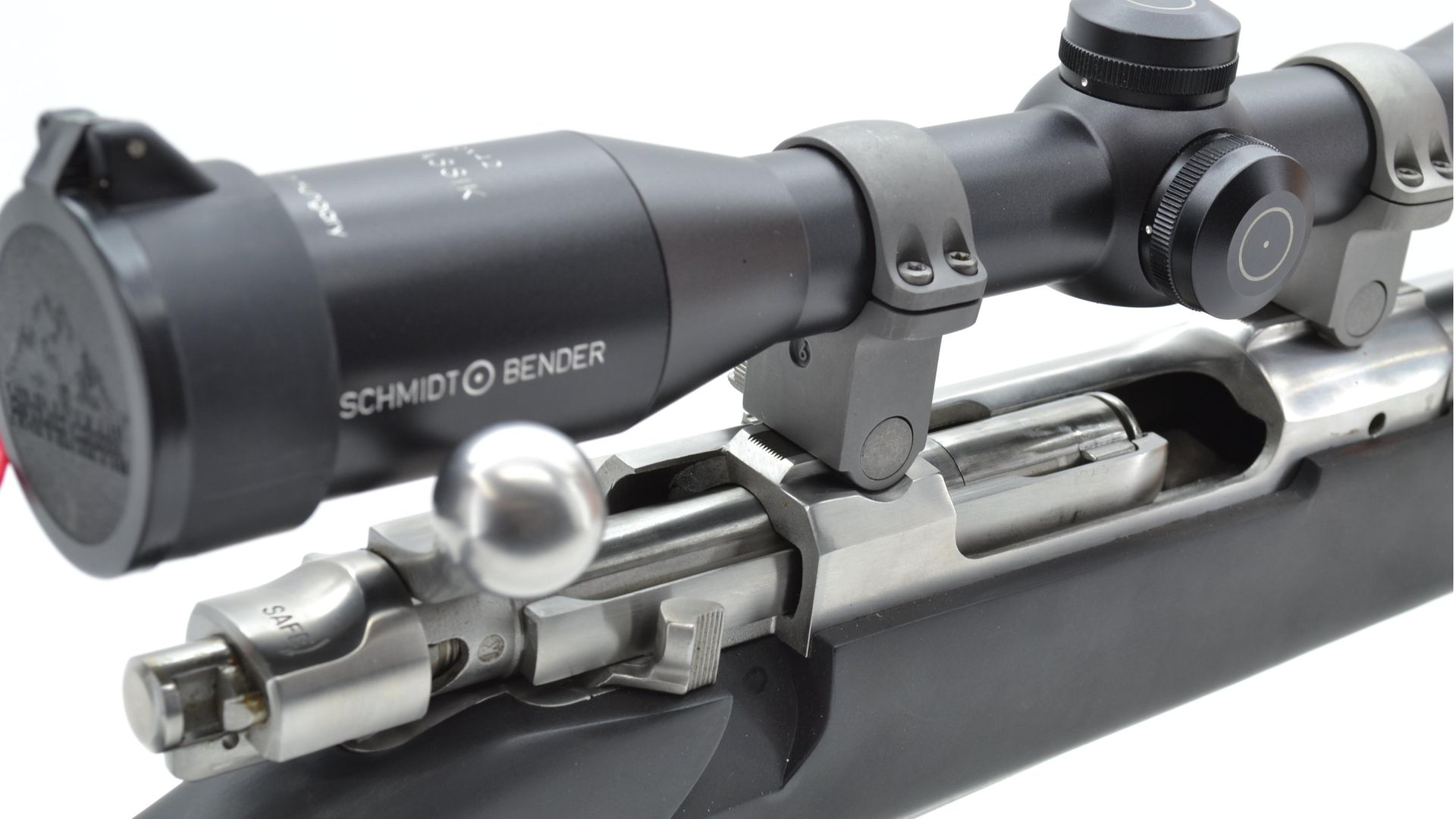 credit: Chris Parkin
credit: Chris Parkin